Dog Commands From Basic to Advanced: Teaching Your Pup to Be the Ultimate Obedient Companion

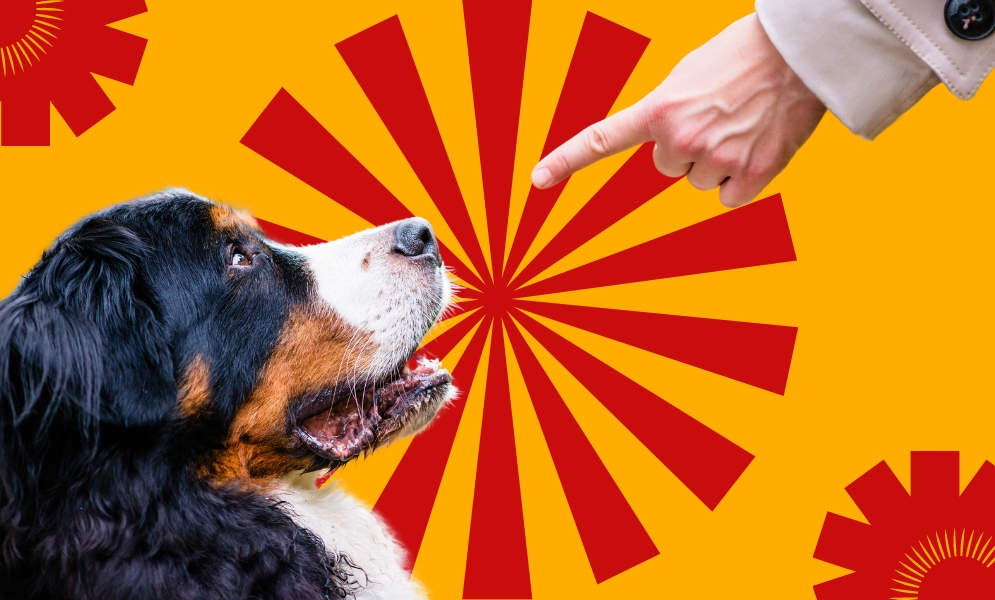
Imagine the joy of having a dog that listens and understands you. Training your dog isn’t just about obedience; it’s about building a strong bond and ensuring their safety. Plus, it’s a lot of fun too!
In this guide, we’ll walk you through the simplest dog commands like “sit” and “stay” to more advanced tricks like shake and rollover that impress your friends and family. So read on.
Basic Dog Commands – Sit, Stay, and Come
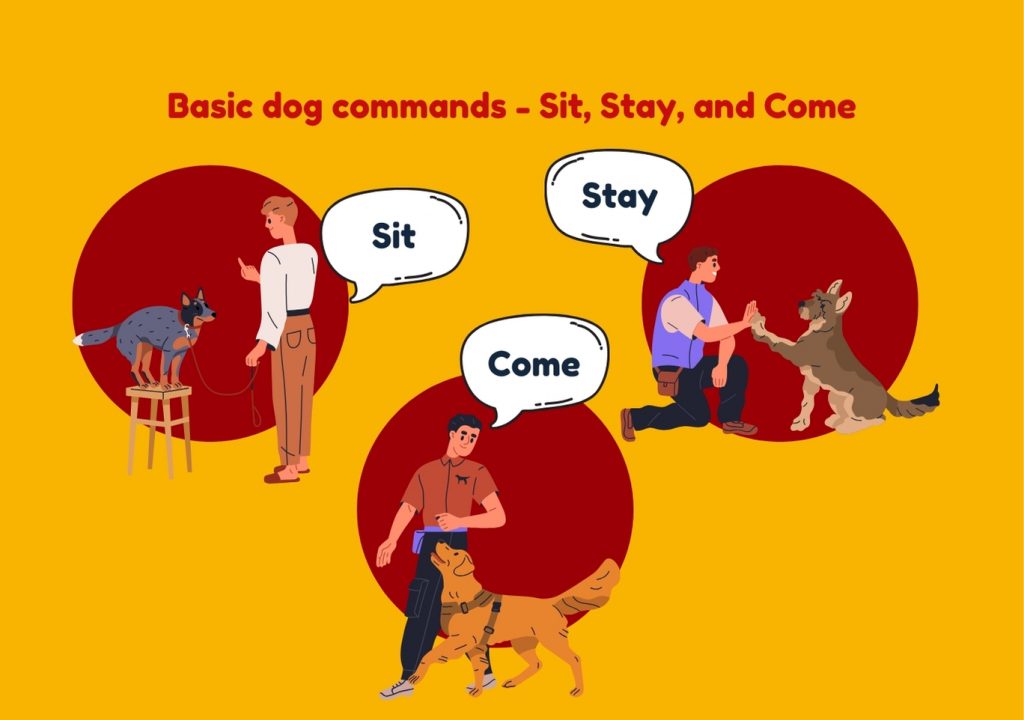
Mastering the fundamental commands is the first step in establishing a solid foundation for your pup’s training journey. These basic commands are the building blocks for more advanced techniques and foster a strong bond between you and your furry companion.
Sit
This command teaches your dog to be seated, which is essential for maintaining control and establishing a calm demeanor. By consistently reinforcing the “sit” command, you’ll instill a sense of discipline and attentiveness in your pup.
Stay
The “stay” command ensures your dog’s safety and obedience. Whether you’re preparing a meal or greeting a visitor, this command empowers you to keep your pup in a designated spot, preventing them from wandering off or engaging in unwanted behaviors.
Come
Arguably, one of the most important commands, “come,” ensures your dog’s safety and responsiveness. In potentially dangerous situations or when you need to regain control, this command allows you to call your pup back to your side, fostering trust and reliability.
By consistently practicing these basic commands, you’ll establish a strong foundation for your pup’s training and cultivate a deeper understanding and respect between you and your furry friend.
Training Tools for Teaching Dog Commands
To effectively teach your pup commands, having the right tools at your disposal is essential. These tools not only aid in the training process but also help reinforce positive behaviors and create a fun, engaging learning environment for your canine companion.
Treats
Positive reinforcement is a powerful tool in dog training, and treats serve as an excellent motivator. Choose small, high-value treats your pup finds irresistible, and use them judiciously to reward desired behaviors.
Clicker
A clicker is a simple yet effective tool that produces a distinct sound, marking the precise moment your dog performs the desired behavior. This clear communication helps your pup understand exactly what action is being rewarded, accelerating the learning process.
Training Collar
While controversial, training collars, such as head halters or front-attaching harnesses, can provide additional control and guidance during the training process. However, it’s crucial to use these tools responsibly and under the guidance of a professional trainer if needed.
Remember, the key to successful training is consistent, positive reinforcement and creating an environment that encourages your pup’s natural desire to learn and please you.
Advanced Dog Commands – Heel, Down, and Leave It
As you and your pup progress in your training journey, it’s time to introduce more advanced commands to enhance your bond and showcase your dog’s obedience and intelligence.
Heel
The “heel” command teaches your dog to walk calmly by your side, maintaining a consistent position and pace. This command is particularly useful during walks or crowded environments, ensuring your pup’s safety and preventing unwanted behaviors.
Down
The “down” command instructs your dog to lie on the ground, promoting a calm and submissive demeanor. This command can be invaluable when you need your pup to remain still and focused, such as during grooming sessions or veterinary visits.
Leave it
The “leave it” command is a powerful tool for teaching your dog self-control and impulse control. Whether it’s a tempting treat on the ground or an enticing squirrel in the park, this command empowers you to redirect your pup’s attention and prevent unwanted behaviors.
Mastering these advanced commands showcases your pup’s obedience and reinforces the trust and respect between you and your furry companion. With patience and consistency, you’ll be amazed at your dog’s level of control and responsiveness.
Training Techniques for Mastering Dog Commands
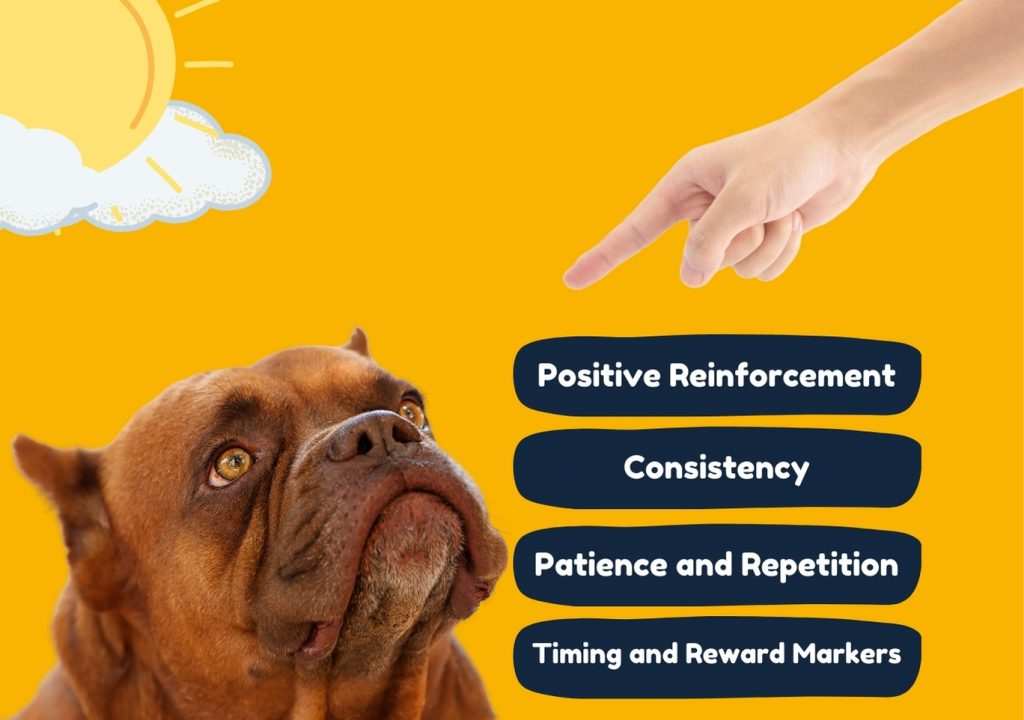
Effective training requires a combination of proven techniques and a deep understanding of your pup’s unique learning style. By employing the following training methods, you’ll create a positive and engaging learning environment, fostering a stronger bond with your canine companion.
Positive Reinforcement
Rewarding desired behaviors with treats, praise, or playtime is the foundation of positive reinforcement training. This approach not only encourages your pup to repeat the desired actions but also strengthens the bond between you and your furry friend.
Consistency
Consistency is key when teaching your dog commands. Ensure that all family members use the same cues and follow the same training protocols. This consistency helps your pup understand and retain the commands more effectively.
Patience and Repetition
Training a dog requires patience and repetition. Break down commands into smaller, manageable steps, and repeat them consistently until your pup masters each step. Celebrate small victories and remember that every dog learns at their own pace.
Timing and Reward Markers
Timing is crucial in dog training. Use a clicker or a verbal marker like “yes” or “good” to mark the exact moment your pup performs the desired behavior. This precise timing helps reinforce the correct action and accelerates the learning process.
By combining these techniques with a positive and engaging attitude, you’ll create an environment where your pup looks forward to training sessions and eagerly learns new commands.
Choosing The Right Word for Dog Commands
Now that you have some idea about basic to advanced dog commands that you need to teach your furbaby, you should also know how to choose the right words. You see, picking the right command words is equally important as knowing which basic commands you should teach your dog.
It will also help you to easily communicate with your furbaby. So here are some tips that will help you to select the right word for dog commands:
- Keep it Simple: Use short, one or two-syllable words that are easy for your dog to understand and remember. For example, “sit,” “stay,” “come,” and “down.”
- Be Consistent: Always use the same word for the same command. Consistency helps your dog learn and respond more reliably.
- Avoid Similar Sounds: Choose words that sound distinct from each other to avoid confusion. For instance, “sit” and “stay” are better than “sit” and “hit.”
- Personalize Commands: Feel free to use meaningful words for you and your dog. For example, instead of “heel,” you could use “side.”
- Incorporate Hand Signals: Pairing verbal commands with hand signals can reinforce learning and be helpful in noisy environments.
Common Challenges in Teaching Dog Commands
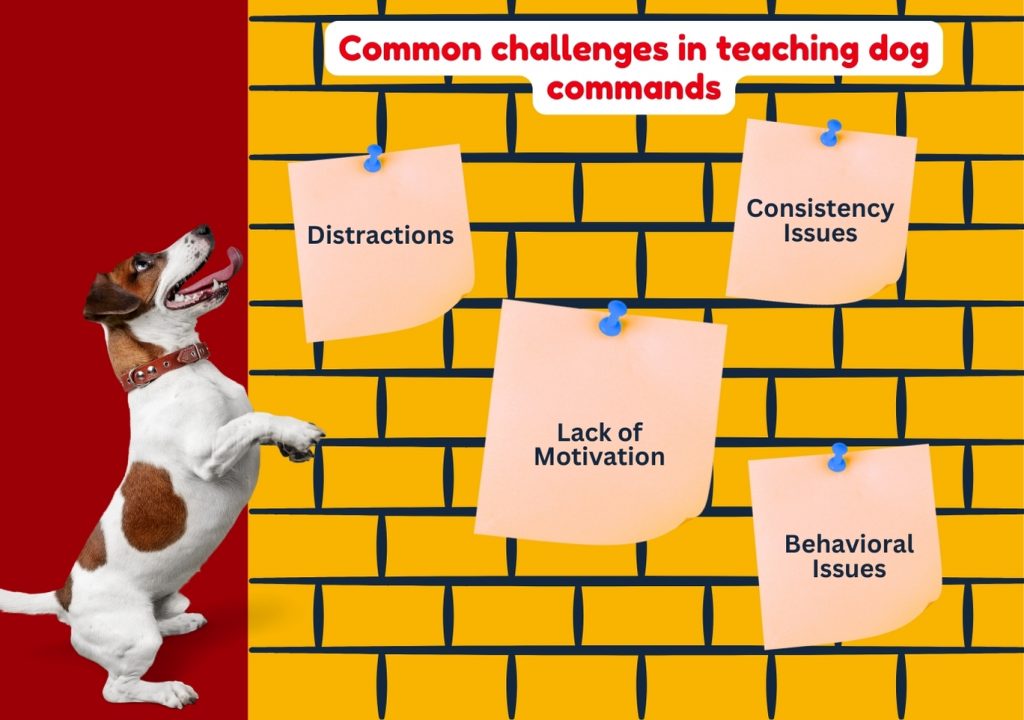
While training your pup can be a rewarding experience, it’s not without challenges. Understanding and addressing these common obstacles can help you overcome them and continue progressing on your training journey.
Distractions
Dogs, especially in their younger years, can be easily distracted by sights, sounds, and smells in their environment. Start training in a quiet, distraction-free area and gradually introduce more distractions as your pup’s focus and obedience improve.
Consistency Issues
Inconsistent training methods or mixed signals from different family members can confuse your pup and hinder its progress. Ensure that everyone involved in the training process is on the same page and follows the same protocols.
Lack of Motivation
If your pup seems disinterested or unmotivated during training sessions, it may be time to reevaluate your reward system. Experiment with different high-value treats or incorporate more playtime and praise to keep your furry friend engaged.
Behavioral Issues
Some dogs may exhibit behavioral challenges, such as fear, aggression, or anxiety, that can interfere with their ability to learn commands effectively. In these cases, seeking guidance from a professional dog trainer or behaviorist can be invaluable.
Remember, patience and perseverance are key when facing challenges in dog training. By addressing these obstacles head-on and making necessary adjustments, you’ll be able to overcome them and continue fostering a strong, obedient bond with your furry companion.
How to Incorporate Dog Commands Into Daily Routines
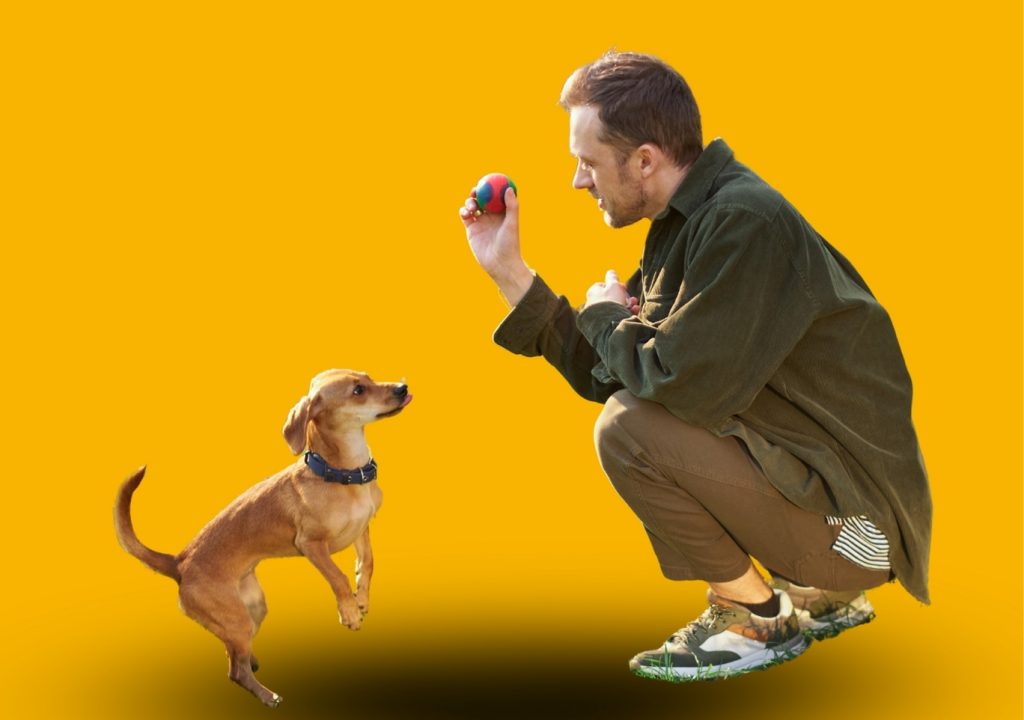
Mastering dog commands is not just about teaching your pup a set of tricks; it’s about integrating these commands into your daily routines and creating a harmonious coexistence with your furry friend.
Meal Times
Before feeding your pup, have them sit and stay until you give the release command. This simple practice reinforces obedience and establishes a routine your dog will quickly follow.
Playtime
Incorporate commands like “sit,” “stay,” and “come” into your playtime activities. This not only reinforces the commands but also adds an element of structure and control to your pup’s playtime.
Walks and Outings
When walking or visiting new environments, use commands like “heel” and “leave it” to maintain control and ensure your dog’s safety. This practice also helps reinforce the commands in real-life situations.
Grooming and Vet Visits
The “down” and “stay” commands can be invaluable during grooming sessions or veterinary visits, helping your pup remain calm and cooperative.
By seamlessly integrating commands into your daily routines, you’ll reinforce your pup’s obedience and create a sense of structure and predictability that dogs thrive on. This consistent practice will strengthen your bond and foster a deeper understanding between you and your furry companion.
Teaching Specialized Dog Commands – Shake, Roll Over, and Speak
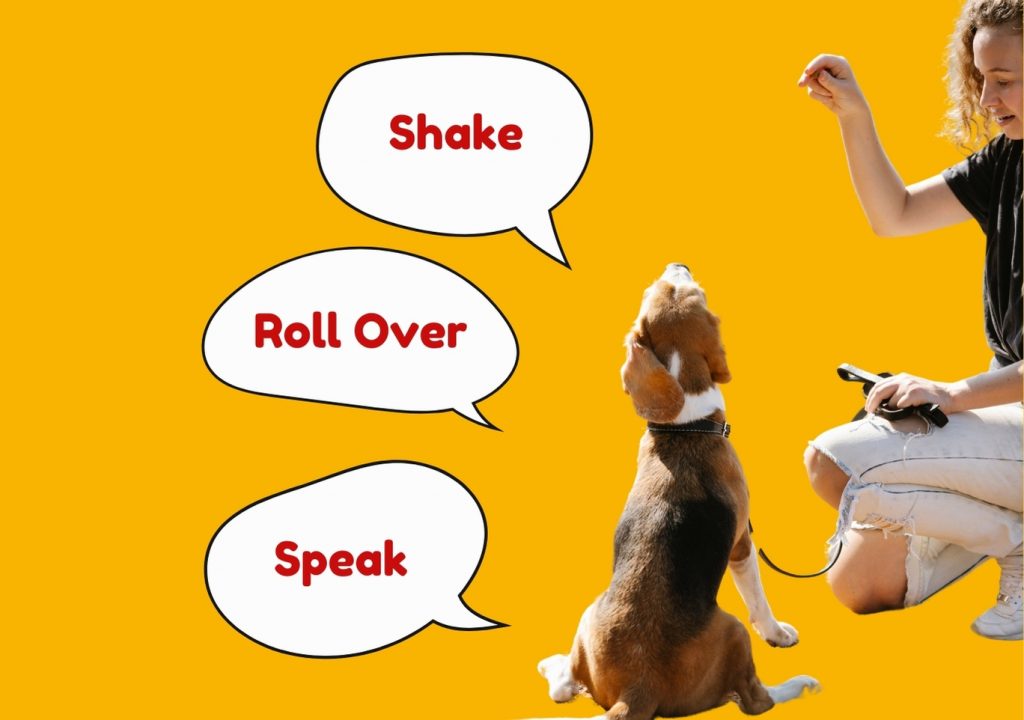
While basic and advanced commands are essential for obedience and safety, teaching your pup specialized commands can be fun and engaging to showcase their intelligence and bond with them on a deeper level.
Shake
The “shake” command teaches your dog to lift their paw and place it in your hand, mimicking a handshake. This command demonstrates your pup’s obedience and adds a playful and entertaining element to your interactions.
Roll Over
The “roll over” command instructs your dog to roll onto their side and back, showcasing their agility and responsiveness. This command can be particularly impressive when performed on cue and will impress your friends and family.
Speak
The “speak” command encourages your dog to bark on command, allowing them to express themselves in a controlled manner. This command can be a fun party trick or a useful tool for getting your pup’s attention when needed.
Teaching these specialized commands not only strengthens your bond with your furry friend but also provides a fun and engaging way to showcase their abilities. Remember, the key to success is to break down each command into smaller, manageable steps and use positive reinforcement to encourage your pup’s progress.






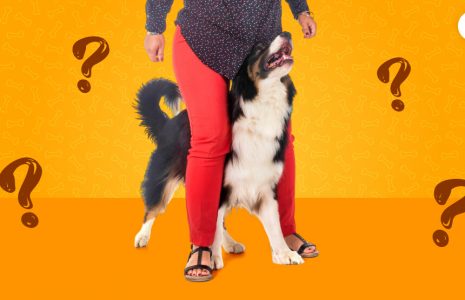
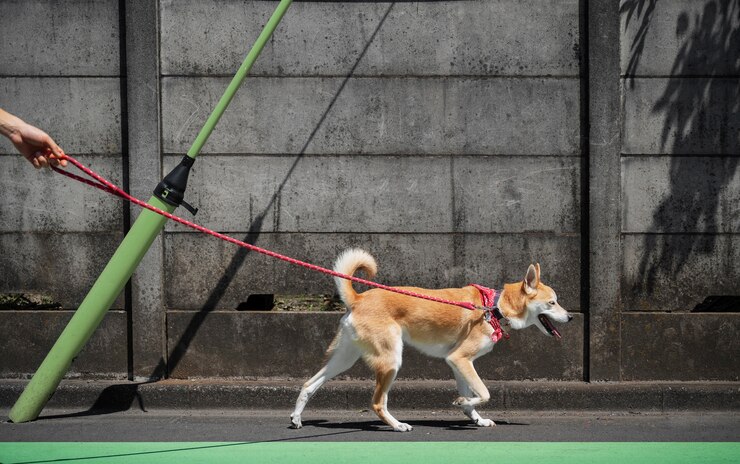

Leave A Comment